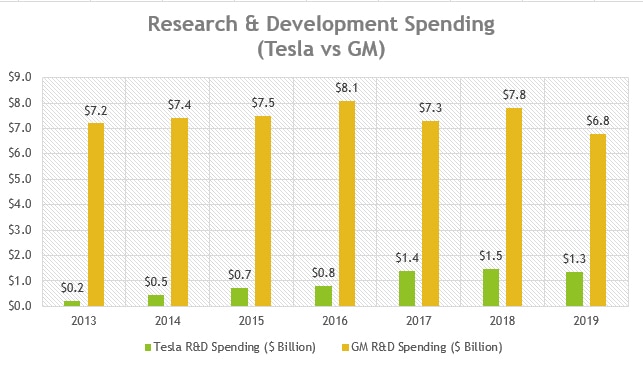Have you ever wondered why the digital strategies adopted by your company are not generating results?
Or are you one of the few who thinks that your company’s digital strategy is a winning strategy? If this is the case, congratulations!
A survey conducted a few years ago by McKinsey showed that only 8% of companies believe that their business models will survive digitalization. Only 8% of the companies surveyed said that their current business model would remain economically viable if the industry continued digitizing at its current course and speed.
Index
Companies are used to change. However, the force and speed with which digital changes occur is unprecedented.
Knowing that the threat is so clear, why do most digital strategies fail?
Most digital strategies do not reflect how digital is changing economic fundamentals, industry dynamics, and competition.
This is why some digital strategies do not work out:
Tactics and techniques, not strategy
In general I could say that most digital strategies are not strategies, they are just tactics.
Do you think that adopting some digital initiatives constitutes a digital strategy?

A strategy comprises a holistic, long-term view. It must take into account all the nuances of the business and direct it to a future point, with profitability.
What we see most nowadays are companies, agencies, and consultants preaching a strategic approach for the most varied activities. Growth strategy, SEO, CRO, SEM, inbound, etc.
Strategies are sold and what we actually have are blocks of activities that are generally disconnected from the business objectives.
Read also: SEO and PPC: Combining for Better Results
This becomes even more evident (and is more serious) in large companies when there is no integrated management of the multiple agents (service providers – agencies, consultants, internal staff).
Read also: Where is the strategy?
Misconceptions
When I talk to some leaders about what they mean by digital, some still understand it as being the updated term for what their IT department does. It is quite common that SEO and analytics projects are headed by the IT department and may pass far away from marketing or BI for example.
Others focus on marketing or digital sales, without concern for technology and development.
Few have a broad, holistic view of what digital really means.
Beware of vague or misleading definitions and concepts.
Digital needs to be viewed with consideration:
- Economic impact: radically altering the profitability curves.
- Operationalization: continuous advances in data analytics and connectivity bring new insights and new business models.
Misunderstanding of the digital economy
Unlike non-digital models, the digital economy disproportionately transfers economic value to consumers. This decreases the revenue share through the chain.
At the same time, it benefits the pathfinders. The pioneers get the lion’s share of the revenue, the fast movers get a little, and the slow movers or those who don’t move at all are left behind.
Simply defending a market position is no longer a winning strategy (something that often happened outside of digital).
Executives need to learn quickly how to compete, create value for customers, and keep a little for themselves in a world of shrinking profits.
Take Tesla, for example. Tesla has “captured” the value of the first motor in electric vehicles. Seven years ago, existing automakers could have bought Tesla for about USD 4 billion. No one made the move, and Tesla accelerated. Since then, companies have invested money in their own projects with electric vehicles to compete with Tesla’s lead. In the last three years alone, GM has invested more than $20 billion in R&D (much of it in sensors like Tesla’s), 5 times the amount invested by Tesla.

Neglecting ecosystems
Don’t underestimate ecosystems. Industries become ecosystems. Digital platforms like Amazon break down barriers between industries.
Value migrates to the platforms rather than to the traditional chains.
The economics of digital platforms and ecosystems changes the fundamentals of supply and demand. The best companies have the scale to reach an almost unlimited customer base, use artificial intelligence and other tools, and benefit from the production chain. Unlikely business models become reality. Facebook is an important media player even without producing content. Uber and Airbnb sell mobility and lodging without owning cars or hotels.
Overvaluing “common suspects
Look beyond the existing players. Most companies are concerned about digital native threats, their actions get most of the attention.
However, market entrants can bring as much disruption as digital natives. How? One way is by moving in a big way.
The digitization of B2B is growing rapidly. Automation of production lines and back-office tasks creates value and enables large-scale movement.
Absence of the duality of digital
Don’t lose sight of the duality of digital. Companies cannot just choose between transforming their core business or innovating in new business models. They need to do both.
A very common thought is that to be disruptive you need to create something completely new. This thinking is understandable and becomes an impetus for an innovation strategy. However, for most companies, the pace of disruption is uneven and they are unable to move away from their current business model.
They need to digitize their current business and innovate through new models.
Digitalization is not going away and is only accelerating. If companies want to survive they need to change where and how they are playing. Besides, they need to do it fast.
How is your company’s digital strategy? Are you making any of these mistakes?
Continue reading: Digital Marketing Metrics: which ones are important?